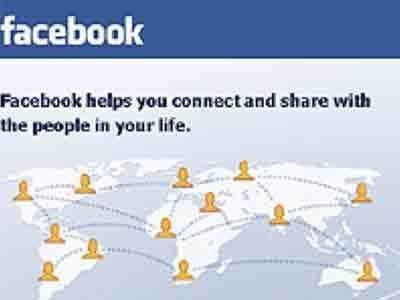
For media makers and consumers alike, the game changing power of online social networks is simply this: they greatly decrease the cost of creating so-called "bridging social capital." By facilitating easy group formation -- thus making it easier than ever to stay in touch with more people with more disparate viewpoints -- emerging media's tools and technology offer an intriguing possible solution to journalism's ongoing trust and credibility dilemma. A still-growing body of academic research supports the notion that online networks (such as Facebook or Slashdot, to name just two) actually make finding and sharing credible news and information more possible than it was in the previous era of legacy media.
A team at Michigan State University, for example, has examined the use of Facebook by undergraduate students over the last three years, using surveys, interviews, and automated capture of the MSU Facebook site to try to understand how and why they use the social network. "What we found surprised us," Nicole Ellison, assistant professor of Telecommunication, Information Studies, and Media, told the 'Freakonomics' blog of the New York Times. "Our survey included questions designed to assess students' 'social capital,' a concept that describes the benefits individuals receive from their relationships with others. Undergraduates who used Facebook intensively had higher bridging social capital scores than those who didn't."
The students found that Facebook helped them maintain or strengthen 'bridging' social capital relationships with people they didn't know that well, but who could provide them with useful information and ideas. They used the site to look up old high school acquaintances, to find out information about people in their classes or dorms that might be used to strike up a conversation, to get contact information for friends, and many other activities. Such tools, which enabled them to engage in online self-presentation and connect with others "will be increasingly part of our social and professional landscape, as social network sites continue to be embraced by businesses, non-profits, civic groups, and political organizations that value the connections these tools support," Ellison said.
Judith Donath, associate professor at M.I.T.'s Media Lab and a faculty fellow at Harvard Law School's Berkman Center for Internet & Society, added that in the "big picture," social networking technologies will "support and enable a new model of social life, in which people's social circles will consist of many more, but weaker, ties. Though we will continue to have some strong ties (i.e., family and close friends), demographic changes...are diminishing the role of social ties in everyday life. Weak ties (e.g., casual acquaintances, colleagues) may not be reliable for long-term support; their strength instead is in providing a wide range of perspectives, information, and opportunities." Donath's associate danah boyd (sic), Ph.D. candidate at the School of Information, University of California-Berkeley, and fellow at Harvard's Berkman Center for Internet and Society, added, "Social media (including social network sites, blog tools, mobile technologies, etc.) offer mechanisms by which people can communicate, share information, and hang out...social media provides a venue to build and maintain always-on intimate communities."
Donath believes, "As society becomes increasingly dynamic, with access to information playing a growing role, having many diverse connections will be key. Social networking technologies provide people with a low cost (in terms of time and effort) way of making and keeping social connections, enabling a social scenario in which people have huge numbers of diverse, but not very close, acquaintances.
In "Public displays of connection," a 2004 paper they co-authored, Donath and boyd noted, "In today's society, access to information is a key element of status and power and communication is instant, ubiquitous and mobile. Social networking sites... are a product of this emerging culture." They explain that the "public display of connections" on such sites is a signal that helps others in your network judge your reliability and trustworthiness. New communication technology encourages us to "bridge disparate clusters," they argue, thus providing us "with access to new knowledge." Trading our previous, offline privacy for more online "public displays of connections" enables others to determine our credibility -- and by extension, that of news and information we may then share through the network.
The emerging media, the authors remind us, also make it less costly to maintain loose or "weak" social ties. Such ties ("the kinds that exist among people one knows in a specific and limited context") are "good sources of novel information.... a person who has many weak yet heterogeneous ties has access to a wide range of information." In the future, Donath and boyd noted, "the number of weak ties one can form and maintain may be able to increase substantially, because the type of communication that can be done more cheaply and easily with new technology is well suited for these ties. If this is true, it implies that the technologies that expand one's social network will primarily result in an increase in available information and opportunities -- the benefits of a large, heterogeneous network." By virtue of being in such a network, where one's identity, trustworthiness and reliability can be readily assessed, people may access more credible information as well.
"It is possible to imagine a scenario in which social networking software plays an increasingly important role in our lives," Donath and boyd concluded -- a prediction that has come to pass in just five years. "For instance, email is becoming increasingly unusable as spam fills inboxes, keeping one step ahead of filtering heuristics. Perhaps a social network based filter is the solution -- email from your connections would always go through, and perhaps the next degree out."
This early but suggestive recognition of the emerging social media's filtering capabilities by Donath and boyd is now accepted by many other academic researchers. But can that filtering function be adapted to help solve journalism's trust deficit and credibility dilemma? There is now widespread agreement that we need some sort of credibility/trust filter for news and information delivery -- but predictably far less accord on what the best filter may be. Instead of online social networks, corporate executives like Google's Eric Schmidt offer "brands" as their answer. "Brands are the solution, not the problem," Schmidt recently told a collection of top American magazine editors. "Brands are how you sort out the cesspool."
(Coming next: brands, trust and journalism)
